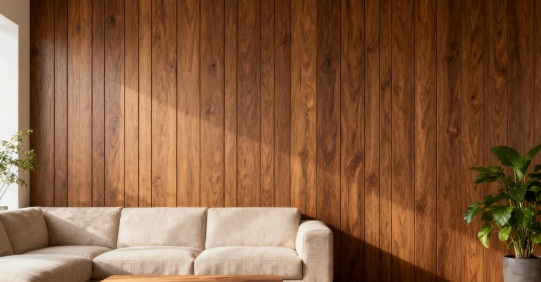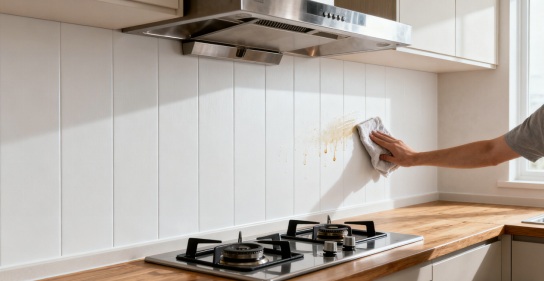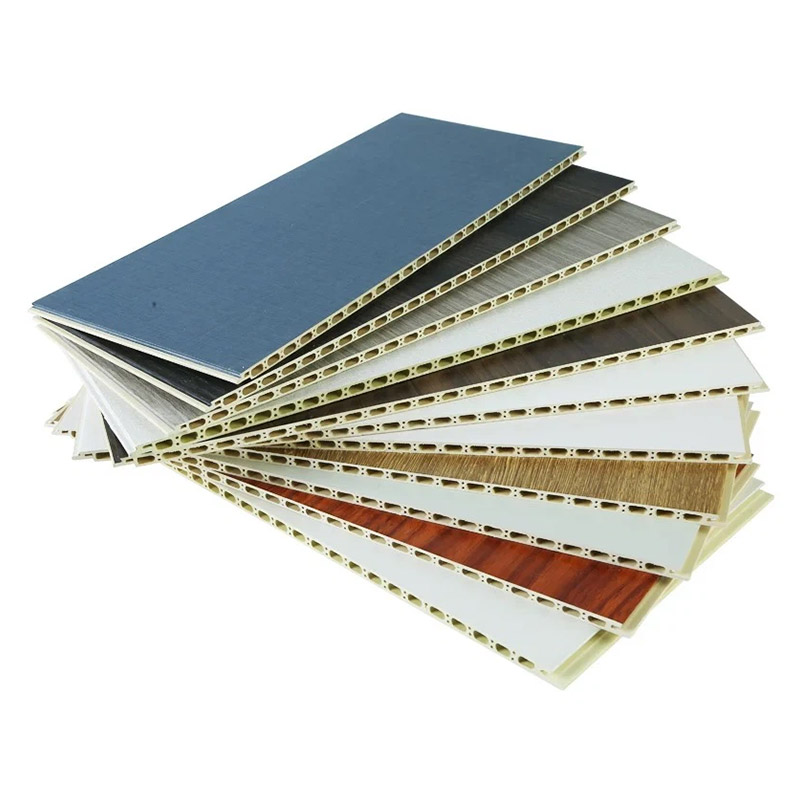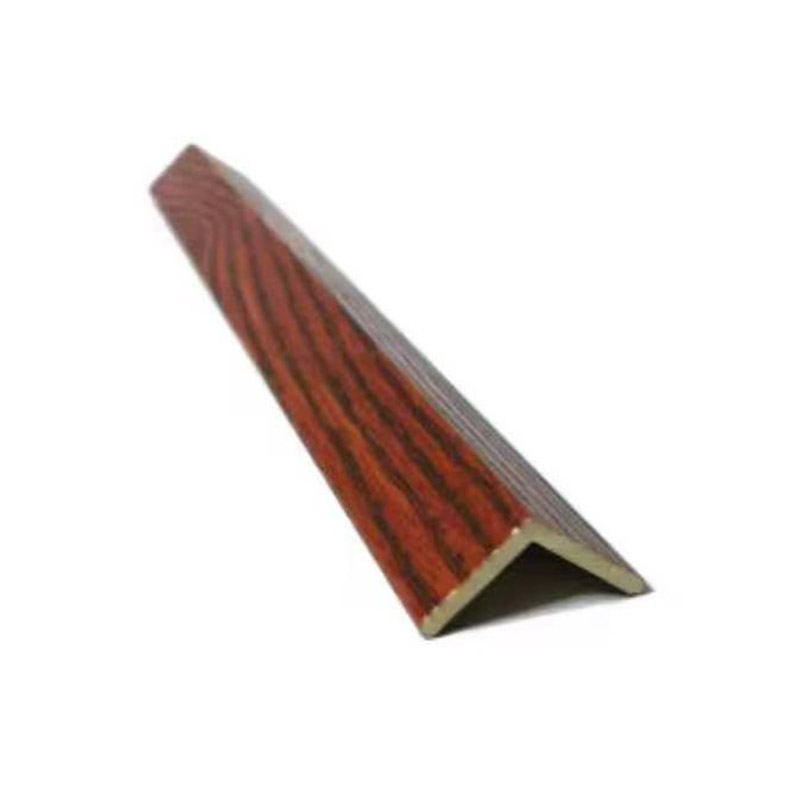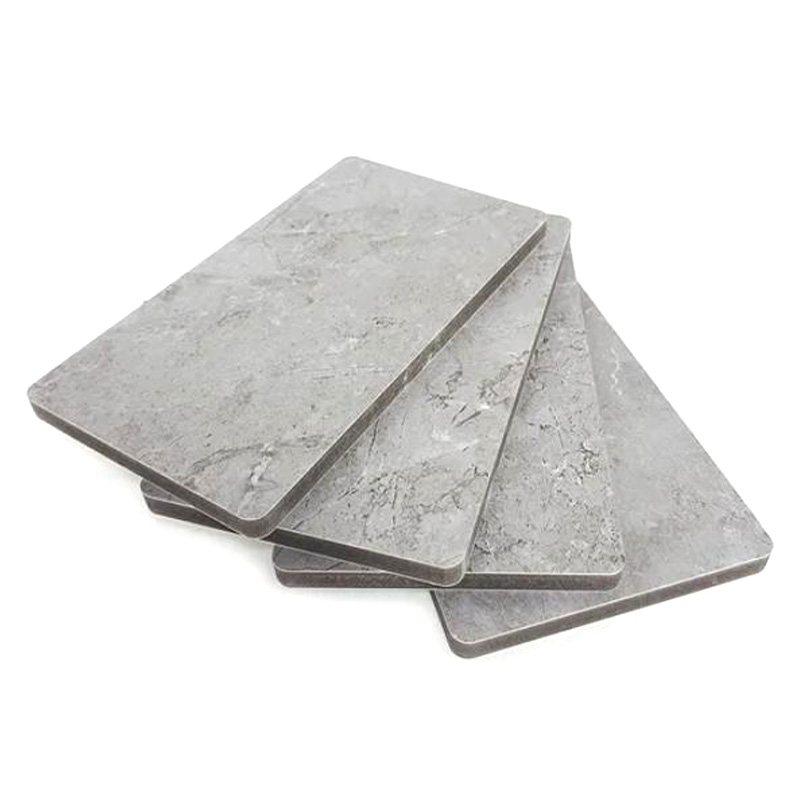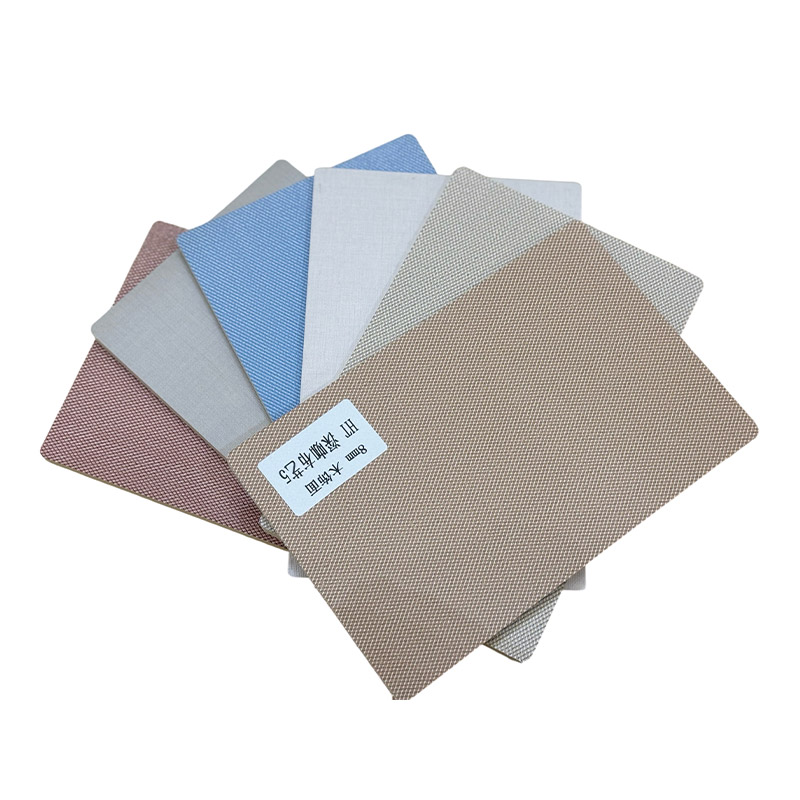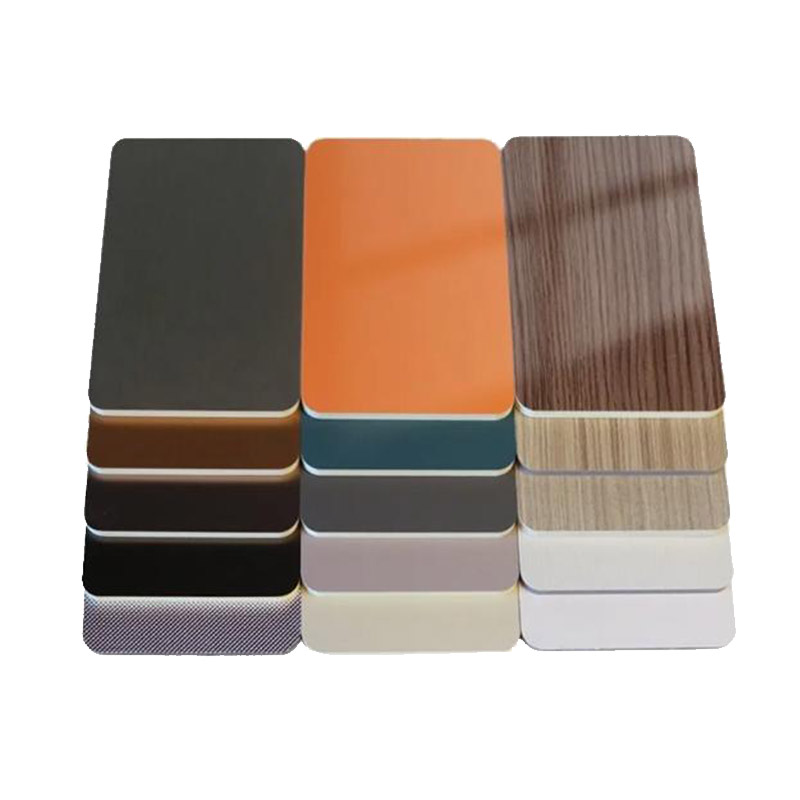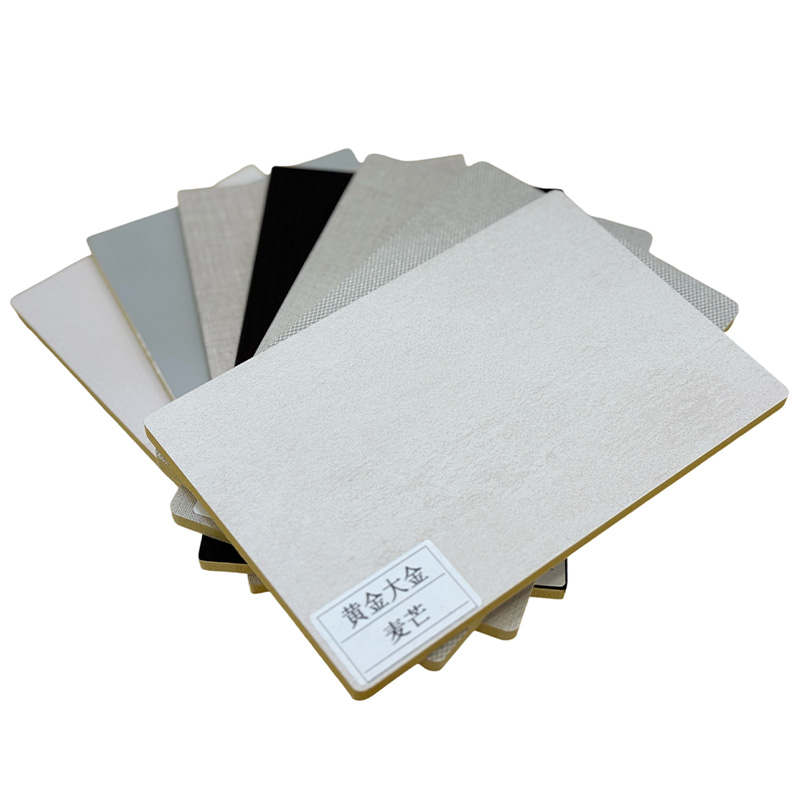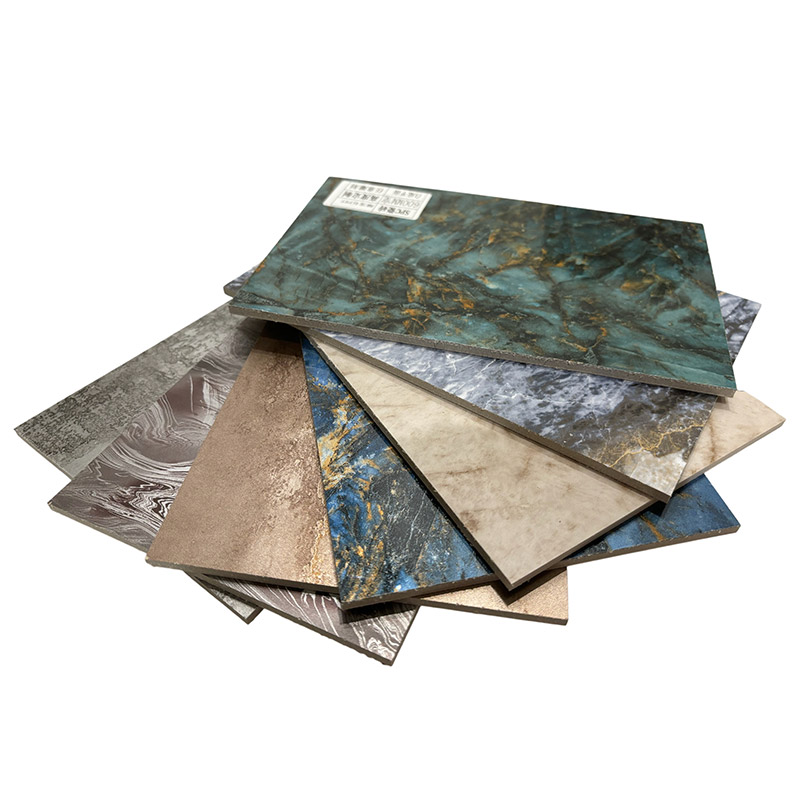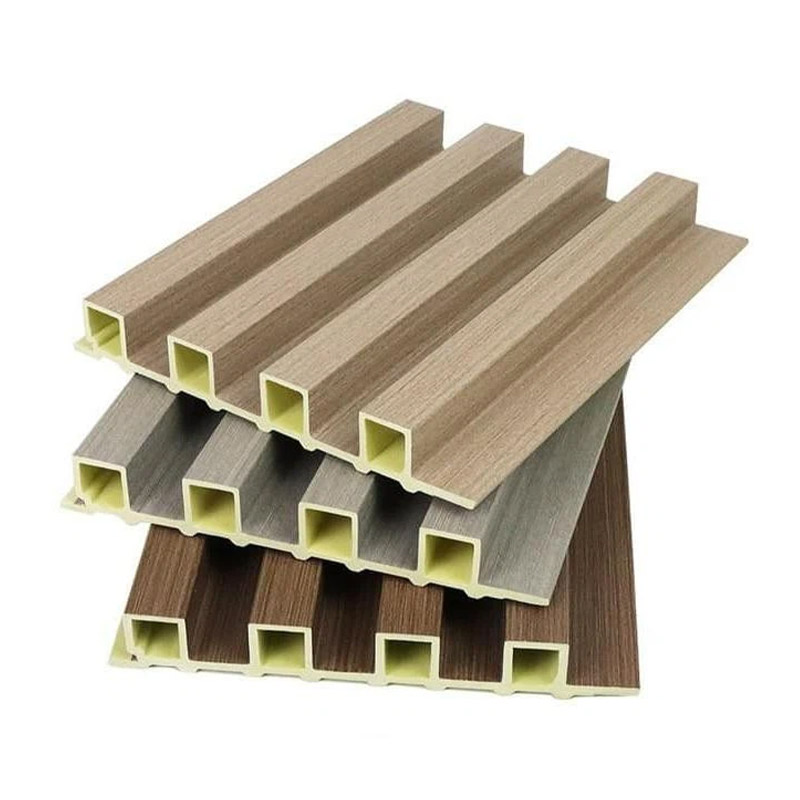WPC VS PVC Panel: Which One’s Right for Your Decoration Projects?
Walls play an important function in decorating homes. They do not just shape the overall look of the space, but they additionally, they must be able to accommodate the demands of various areas like bathrooms, kitchens and bedrooms. In the current market for wall decor two types of materials stand out as the most sought-after options: WPC (Wood Plastic Composite) wall panels and PVC (Polyvinyl Chloride) wall panels. This article will explore the difference between WPC and PVC panels to help you in making the best choice for your home’s wall decor needs.
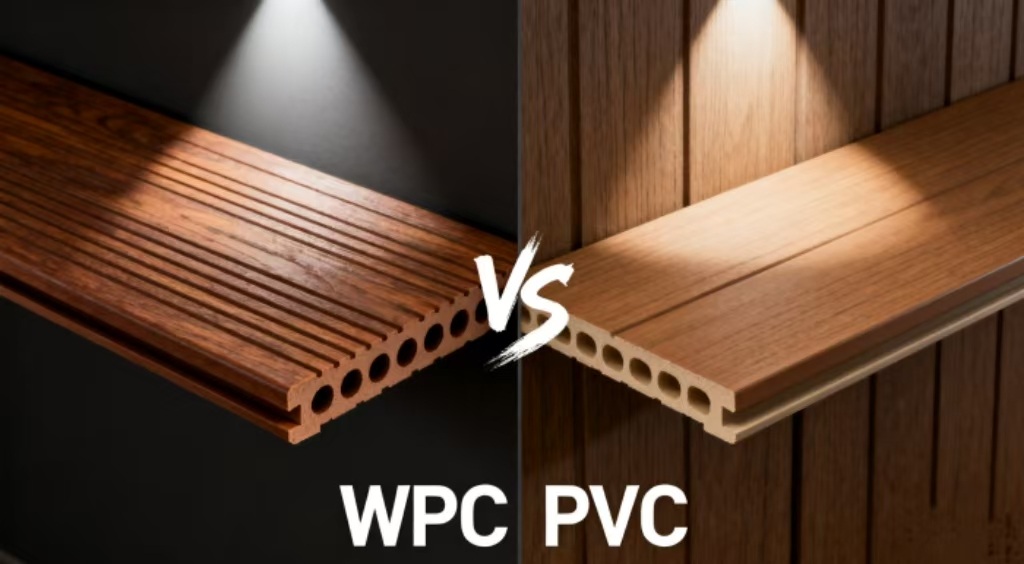
Table of Contents
WPC vs PVC Panels: Table for Quick Comparison
| Feature | WPC Panels | PVC Panels |
| Material | 50% wood fibers+50% plastic | 100% plastic(vinyl) |
| Water Resistance | Good (not fully waterproof) | 100% waterproof |
| Durability | Strong, resists scratches/dents | Lightweight, resists chemicals |
| Weight | Heavy | Light |
| Best Uses | Living,bedroom, balconies | Bathroom,kitchens, clinics |
| Eco-friendliness | Uses recycled wood/plastic | Recycled PVC options available |
WPC VS PVC panel–Core differences in Home Scene Requirements
Waterproof and Moisture Resistance
For walls that are in damp areas like kitchens, bathrooms and basements, moisture-resistant and waterproof qualities are vital. WPC wall panels are treated with a special treatments to prevent moisture from their wood fibers and when coupled with a base made of plastic, they have a good water-proofing performance. The panels are not as likely to form or swell when they come into interaction with walls that are damp. PVC wall panels however are not absorbed by nature and provide a remarkably resistant to moisture. They can be used directly for walls surrounding shower areas in bathrooms, and they can be cleaned using water. In the case of looking at WPC vs PVC panel in this regard they both work well on humid walls, but PVC wall panels offer better durability in extreme humid environments.
Decorative Appeal
Walls in living room walls, bedrooms, and entrance halls need solid decorative appeal to meet the aesthetic requirements. WPC wall panels feature natural wood grain textures giving an inviting and soft feeling. They’re ideal for making natural and simple-looking walls. Some panels are able to be stained or painted to enhance the design. PVC wall panels come in an array of designs and colors. They are able to replicate the look of stone, wood grain wallpaper, and much other materials, as well as have a variety of surfaces (matte or gloss) and an incredibly flexible shape. For decorative options, if prefer a natural look, WPC wall panels are an excellent choice. If you are looking for a wide range of shapes and styles, PVC wall panels are more appropriate.
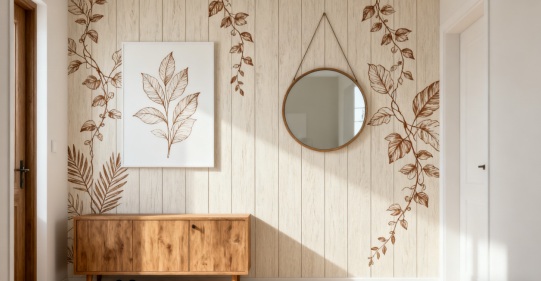
Environmental Friendliness
For walls that are enclosed such as kids’ rooms and bedrooms, eco-friendly design is essential to create the health of your living space. The best WPC wall panels make use of environmentally friendly wood fibers and odorless plastics which result in minimal formaldehyde emissions, which meet indoor environmental requirements. However, low-quality WPC wall panels could comprise recycled waste materials and could result in unpleasant smells. The traditional PVC wall panels could have heavy metal stabilizers such as Cadmium and lead. However, nowadays, most environmentally friendly PVC wall panels use lead-free formulas that have no odor, and achieve environmental certifications like ROHS and E0 grades. It is vital to know that both kinds of panels will require you to select products that are certified as eco-friendly, particularly for areas where you will spend long periods of time in, such as bedrooms or rooms for children and it is recommended to spend time reviewing the test results.
Installation Adaptability
Certain wall situations, like rough walls, wall renovations that have been done for years and gypsum walls require wall panels that have an excellent installation flexibility. WPC wall panels weigh a bit more in comparison to PVC walls. While installing, it’s essential to ensure the walls are level. They can be put up by snap-on method or glue, and can be used for straight installation on walls with rough surfaces (with some basic leveling prior to installation). The wall panel made from PVC is light and easy to install, which makes installation a breeze. The snap-on installation technique doesn’t require a complicated wall treatments. When renovating old walls they can be directly sprayed over the wall’s surface (such as latex- or tiled painted walls) and save a substantial amount of time. In terms of adaptability to installation, PVC wall panels are more efficient and will accommodate a range different wall base. WPC wall panels however will require greater care to ensure that the wall is flat and are suitable for decorating situations where wall leveling is done.
Durability and Maintenance
Walls that are regularly used or are located in areas that are public spaces of your home must be strong and easy to maintain for long time usage. WPC wall panels possess a moderate hardness on the surface and aren’t likely to be damaged by everyday collisions. However, they should be protected from scratches caused by sharp objects. To clean them, just wipe them clean with a dry cloth or neutral detergent. There is no regular maintenance is needed. PVC wall panels are more durable, with superior wear resistance to scratches and a strong impact resistance which makes them less prone to being damaged when used in daily life. Marks are not a problem for PVC wall panels can be simple to wash dust and oil stains are easily removed using the help of a damp cloth, resulting in lower maintenance costs. Regarding durability and maintenance ease, PVC wall panels have advantages, while WPC wall panels have to be secured from sharp damage.
WPC vs PVC–Best Wall Match-Ups
Suitable Wall Scenarios for WPC Wall Panels
Living rooms feature walls: The organic wood grain pattern of WPC wall panels improves the overall look of the room and is ideal for contemporary simple, Nordic, and new Chinese interiors.
Bedroom walls: The soft texture that comes from WPC wall panels can create a cozy sleeping environment. Additionally, environmentally friendly designs make the perfect choice for the closed bedroom.
Balcony walls: With excellent weather and waterproof characteristics, WPC wall panels can stand up to the sun and rain on the balcony and add natural beauty to your balcony.
Suitable Wall Scenarios for PVC Wall Panels
Walls for bathrooms: The robust waterproofing properties that is present in PVC wall panels permits them to be installed directly on shower walls, which eliminates problems like hollowing and water seepage, which is common when using traditional tiles.
Walls for kitchens: PVC panels are impervious to oil-based stains and simple to clean, which makes them perfect for walls surrounding stoves in the kitchen and reducing problem of cleaning the smoke from oil.
Walls for children’s rooms: Available in a range of colors PVC wall panels make a great area for kids. The eco-friendly models are odorless and have high impact resistance and are able to withstand the impact of collisions during kids’ play.
Walls that were built for renovations to old walls PVC wall panels may be directly positioned over the wall in place without the need to tear it down to speedily improve the appearance of the wall while reducing expenses for renovation.
Suggestions for Cross – Scenario Selection
Entrance walls: If are looking to create a balance between the appearance and durability of your walls it is possible to choose WPC wall panels to create the baseboard and pair the panels to PVC decor panels. If you are on a tight budget and require quick installation and a clean look, PVC walls are a better choice.
Basement walls: Resistance to moisture is the main goal. The two options of PVC wall panels as well as high high-quality WPC wall panels work however, they should be combined with a wall base treatments that are moisture-proof.
Three Steps to Choose the Right Wall Panels
Step 1: Clarify Your Wall Needs
First, identify the area in which the wall will be for example, the living room or bathroom wall that is a feature. Based on the specifics of the area including the humidity as well as frequency of contact along with aesthetic demands, determine the essential attributes for performance you require, including water resistance, attractiveness and long-term the durability. Then, choose the style of decoration for the wall, for example natural modern, modern or fun and then choose the pattern and texture that the walls are made of to suit. Then, you can set the budget for wall decor that includes the cost of buying wall panels, other items like snaps and glue and installation charges.
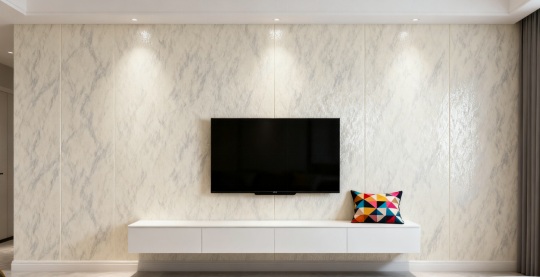
Step 2: Screen for High-Quality Wall Panels
Examine the environmental certifications of walls, like ROHS and E0 grade, ROHS and national test reports for building materials to make sure that there aren’t any harmful substances released. Check the condition of the panels on site: check if the the wall panels is smooth and free of scratches and bubbles, and test the strength on the joint (for snap-on varieties) as well as press the panels using your fingers to feel their firmness. Avoid items that are too fragile and easier to break. Request samples to test to soak the samples within water for at least 24 hrs to see if they bulge, or shrink (to test resistance to moisture) Then utilize a key to lightly scratch the surface and see how easy it is create scratch marks (to check the wear resistance).
Step 3: Confirm Installation and After-Sales Service
Select an installation method that’s appropriate to your wall. For walls with rough surfaces it is suggested to utilize a mix of snap-on and glue for double fixing. For older wall restorations and for new construction, a snap-on installation is an option. Examine the options offered by the seller: find out whether they have a skilled installation team as well as suggestions regarding wall base treatments; as well as find out what after-sales protection available for installation, like repairs for cracks, or sagging after the installation. Verify the warranty period for high-quality WPC wall panels typically come with a warranty between 5 and 10 years, whereas PVC wall panels come with warranties of 3 to 8 years. It is important to know the terms and duration of warranty like covering cracks, deformations or other damage caused by non-human elements.
Conclusion
The main difference in WPC and PVC panels for walls is in their strengths. WPC wall panels are distinguished by their natural textures, which are ideal for those who want to have natural, warm design and long-term usage. Wall panels made of PVC excel in the resistance to moisture, their easy installation, and a variety of styles making them ideal for those with limited budgets or rapid remodeling.
When deciding on WPC or PVC panel, you should focus upon the space you have available, design aesthetic and your budget. Don’t go in the blind in search of “high-end” or “low-price”. As a premier wall panel manufacturer, Chongqing Huigong provides top-tier WPC and PVC panels; visit us to purchase the perfect options for your wall decor.

